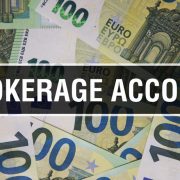Portfolio Diversification: What Assets Should You Keep in Your Self-Directed IRA?
You hear this buzz word all the time—diversification. But what does it mean, and when can it be more than a buzz word? When can it be a legitimate retirement investment strategy, and what does it offer you that a lack of diversification cannot? Let’s look at a Self-Directed IRA, diversification, and what it means to broaden your exposure to the market:
Portfolio Diversification in the Traditional Retirement Strategy
For many retirement investors, portfolio diversification is a way to diversify your assets within the stock and bond markets. This is achieved by adding a mix of mutual funds, bond funds, and other assets like exchange-traded funds (ETFs) to ensure a broader range of access to the markets.
This does indeed add more diversification to a portfolio than simply owning a few stocks. Even if you owned 10 individual stocks, you would have a far less-diversified portfolio than if you owned mutual funds.
The issue is that this only achieves one level of diversification. You are diversified, but only within two asset classes. With a Self-Directed IRA, you can broaden the asset classes you hold in a retirement account to give yourself additional diversification.
Diversifying Across Asset Classes with a Self-Directed IRA
If you own mutual funds that broaden your diversification within stocks, that’s great—but it’s still essentially relying on one asset class: stocks. For some retirement investors, including those with a shorter timeline who are playing “catchup” with their accounts, this kind of investment strategy means that a stock market crash could delay your retirement.
That’s not the goal. That’s why many investors turn to self-directed retirement accounts to broaden their retirement assets. That includes new asset classes, such as:
- Real estate
- Private stock in companies
- Tax liens
- Private loans
- Precious metals
Extending your reach beyond the stock market has the added benefit of additional financial security. If the stock market lags or undergoes a downturn, your real estate properties can continue generating money from rental income. The same goes for private loans. This is the benefit of broadening your asset classes: your retirement plan can continue to thrive and prosper even when the headlines in the stock market are making other, more traditional investors fearful.
How Diversification Adds to Your Sense of Security
This is not to say that you should avoid the stock market entirely. But by broadening your diversification among different asset classes, you can give yourself more discipline to ride out the waves in the markets.
Yes, the stock market tends to produce great returns over time, which is why financial experts so often recommend that that’s where you place the majority of your retirement investments. However, without a properly diversified portfolio, you can grow fearful whenever the stock market turns down. For some, that means pulling money out of the market at the worst possible time—after a drop. When some people sell their stocks and funds after a stock market drop, they’re only solidifying those negative returns.
It’s important that you build a portfolio that can give you the confidence you need to hold out for the long-term. That’s what broadening a portfolio beyond stocks and bonds can do. And when you add high-quality investments like real estate to a Self-Directed IRA portfolio, the returns can sometimes even outdo anything you would have found in the market.
True diversification is not just acquiring a lot of different types of stocks. It’s acquiring a lot of different types of investments.
Interested in learning more about Self-Directed IRAs? Contact American IRA, LLC at 866-7500-IRA (472) for a free consultation. Download our free guides or visit us online at www.AmericanIRA.com.







